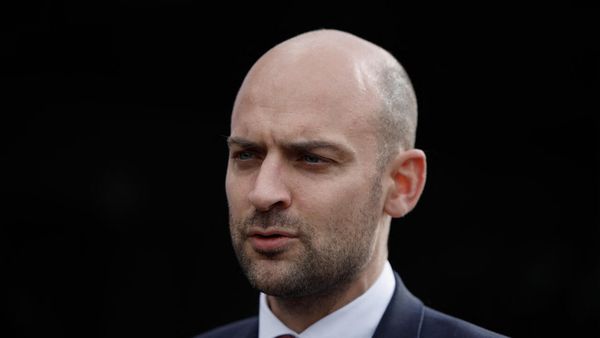
The time – emphasis on time – has come to declare that Major League Baseball has nailed its effort to speed up games. MLB people always talked about wanting to finish games in less than three hours, but they never could make it happen. Now they have.
The average time of a game in the first two-plus months of the season is 2hr 40min – a span not seen since the early 1980s – much shorter than the bloated averages of 3hr 6min in 2022 and 3hr 11min in 2021. But stats are only part of the story.
Two pitch clocks are mounted behind home plate and two above the center field fence to provide ballgames with a rhythm – and to excise all that added time for, say, a hitter to step out of the batter’s box to readjust his gloves, or for a pitcher to stroll around the back of the mound.
Baseball literati like George Will once celebrated the sport as a “timeless game”, without clocks needed, or wanted. But the poets penned those rhapsodies when games were shorter – under two-and-a-half hours on average as recently as 1976. (Will likes the rules changes, by the way.)
The pace grew languid. Fat needed to be trimmed. People don’t have three hours for much of anything now. After a minor-league test drive, MLB rules were changed for this year. Some thought games might feel forced, rushed, even gimmicky. The clocks are not obtrusive at all.
I went to a game recently to judge the effect of the new rules firsthand. The game in Philadelphia between the Phillies and the Arizona Diamondbacks, on a Monday, would be no quickie – 2hr 57min. But it would have lasted another half-hour under the old rules.
Fans don’t pay attention to those three-foot-high clocks with the yellow numerals. I’d thought they might do countdowns, like a scoreboard or 24-second clock indoors. The clocks were immediately switched off, not merely reset to 0, as soon as the pitcher and batter engaged.
The time limits sound tight, but they aren’t. Pitchers have 15 seconds to begin throwing a pitch, 20 seconds if a runner is on base. Hitters need to be in the batter’s box, focused on the pitcher, with at least eight seconds on the clock. A ball is added to the count if a pitcher fails to start his windup in time, with a strike added to the count if a batter is not locked in on the pitcher.
There is some wiggle room. Pitchers are limited to two “disengagements” – ie stepping off the rubber or trying to pick off a runner – per plate appearance. Additionally, each team is given five mound visits per game, a statistic kept on the big scoreboard at Citizens Bank Park.
Of the 18 half-innings in the Diamondbacks’ 6-3 victory, eight took five minutes or less. Only two took more than 10 minutes: Arizona’s three-run, four-hit second inning, and the home seventh, which included a mid-inning pitching change and ended with the bases loaded.
The game still ended with nine runs, about the same as MLB’s 2023 average of 9.11, up about a half-run from 2022. There were four home runs. Slightly bigger bases and a rule that limits infielders from “shifting” to a batter’s strength might have helped the teams to 16 hits.

There were no pitch-clock violations in the Arizona-Philadelphia game – and only three in 12 major-league games that night, per a brand-new Twitter site, @MLBClockViolations, put together by a Canadian sports fan and web-services director named Luke DeWitt.
(Pitch-clock violations have not disappeared as pitchers and batters have become more familiar with the rules, DeWitt told me, but players are becoming more comfortable. There were 82 violations in the first 15 days of June, compared with 146 in the first 15 days of the season.)
With restrictions brought on by the pandemic now gone, the rules changes also might have helped boost attendance to 27,244 per game through 15 June, compared with 26,566 all of last year. And summer, the height of the baseball season, is still to come.
In large part because the Phillies got hot at the end of last season and made it to the World Series, Philadelphia’s average home attendance has spiked this year, to 39,228 per game compared with 27,689 at the same point of last season, or a 42% uptick. One possible reason is that weeknight games start earlier, a benefit to families with school-age kids.
A big-league ball game is not a cheap night out. I paid $40 on StubHub for a ticket with a $48 face value to sit in Section 317, behind home plate but in the upper deck, just below the nosebleed seats. Parking was $25. A Federal Donuts chicken-tenders platter was $12.49.
The Phillies pushed up the start of midweek night home games to 6.40pm from 7.05pm, so this game ended at 9.40pm. Many families still headed for the parking lots after the seventh inning ended at 9. But they would have seen less than six innings a year ago.
Clocks have been used recently to mark time between half-innings and during mid-inning pitching changes late in games – which have practically bogged down games since there have been relief pitchers. Now, a reliever has two minutes to get to the mound.
These pitch clocks could be ominous, looming over a ballgame like an examination proctor, but the atmosphere is the same. Kids in Little League shirts still cavort in the aisles, and fans still efficiently stride to the concession stands for a mid-game beer ($10.99 to $15.99).
And, speaking of beer, three teams quickly announced they were extending the time in which they sell cold ones – from seven to eight innings – because the new rules resorted in shorter game times. Why, a fan stuck in a beer line might miss more action on the diamond!
The Phillies did not respond to my request asking if food and beer sales were down because games were shorter. But crowds have been bigger, so it might be a wash, anyway.
The Phillies lost, but I heard no one grumbling that he or she had been short-changed. After the final out, the people left in the park sort of did a collective shrug, got out of their blue seats and headed for their cars or the subway. I bet most of them will return.







